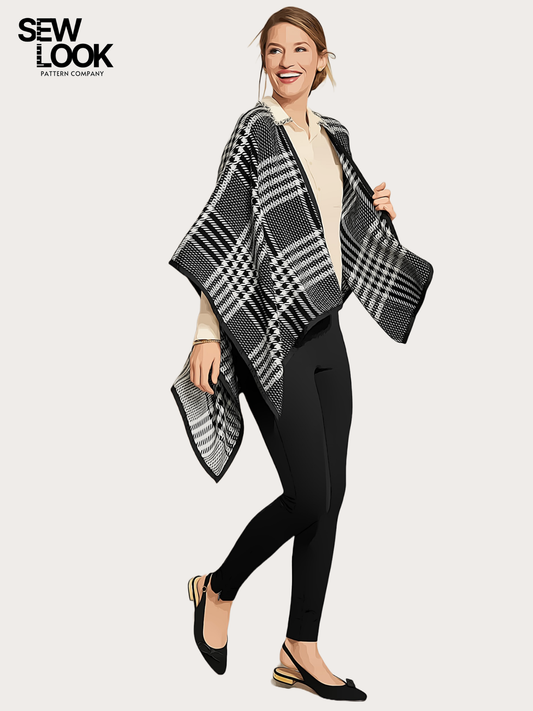Jersey Fabric
What is Jersey Fabric?
Jersey fabric is a type of knit textile that is known for its softness, stretch, and comfort.
Typically used in clothing, particularly for creating casual and comfortable garments.
Jersey fabric is commonly used for creating casual clothing items like t-shirts, tank tops, dresses, skirts, and activewear. It's also often used for children's clothing and undergarments due to its comfort and stretch!
History of Jersey Fabric
The history of jersey fabric is a tale of evolution and influence. Originating on the Channel Island of Jersey, this fabric has journeyed through time, leaving an indelible mark on both fashion and comfort. From the mid-20th century to the present day, jersey fabric has continued to flourish. Its softness, stretch, and versatility have made it a cornerstone of casual clothing. The availability of various types of jersey, from cotton to polyester, caters to diverse preferences and needs.
Application and usage
T-shirts, dresses, sportswear, lounge wear, undergarments, and children's clothing.
Care Instructions
-
Machine or Hand wash only.Wash in cool water with a gentle soap or detergent. If stained, soak in lukewarm water with soap for five minutes. Gently rub the stain/s and rinse. Gingham is easy to clean and care for in a home laundry.
-
Line Dry - Since gingham is cotton fibers, the process of wet to dry in the standard dryer will shrink the fibers.
The term "jersey" is believed to have originated from the Channel Island of Jersey, located between England and France. In the 18th century, fishermen in the region began producing knitted garments from wool to protect themselves from the cold maritime climate. These garments, known as "jerseys," were comfortable, warm, and had a unique texture due to the knit construction.

Jersey fabric gained significant prominence in the early 20th century as fashion trends shifted towards more comfortable and casual clothing. Coco Chanel played a crucial role in popularizing jersey fabric in high fashion during the 1920s. She used jersey to create stylish and comfortable garments that deviated from the restrictive and formal clothing of the time.
Chanel's use of jersey marked a turning point in fashion history, as it demonstrated that comfortable fabrics could also be elegant and fashionable. This paved the way for jersey fabric to become a staple in both everyday wear and high-end fashion.
Jersey fabric comes in various weights, from lightweight to medium-weight. This versatility allows it to be used for a wide range of clothing items, from t-shirts and dresses to leggings and loungewear.
-
There are various types of jersey fabric, each with its own characteristics and uses in garment clothing. Here are some common types:
-
Cotton Jersey: Made from cotton fibers, this type of jersey is known for its softness, breathability, and comfort. It's commonly used for casual t-shirts, dresses, and loungewear due to its natural feel against the skin.
-
Viscose or Rayon Jersey: Created from wood pulp, viscose or rayon jersey has a silky and smooth texture. It drapes beautifully and is often used for flowy dresses, skirts, and blouses that require a more elegant look.
-
Polyester Jersey: Polyester jersey is a synthetic version that offers durability and wrinkle resistance. It's commonly used in sportswear, activewear, and garments that require moisture-wicking properties.
-
Modal Jersey: Modal is a type of rayon made from beech tree fibers. Modal jersey is incredibly soft, breathable, and has a luxurious drape. It's often chosen for dresses, tops, and sleepwear.
-
Interlock Jersey (Double Jersey): This is a thicker and less stretchy version of jersey fabric. It has two sets of interlocking loops, making it more stable and less prone to curling at the edges. It's suitable for dresses, tops, and structured garments.
-
Ribbed Jersey: Ribbed jersey has raised lines or ribs running vertically. This texture adds visual interest and stretch. It's often used for garments like bodycon dresses, fitted tops, and cuffs.
-
Slub Jersey: Slub jersey has intentional irregularities in the yarn, creating a textured appearance with subtle variations in thickness. It's popular for creating a casual, slightly rustic look in t-shirts and tops.
-
Jacquard Jersey: Jacquard jersey features intricate patterns or designs woven into the fabric. This adds a unique visual element, making it suitable for creating statement pieces like dresses and tops.
-
Burnout Jersey: Burnout jersey is created by applying a chemical process that partially destroys the fabric's fibers. This results in a semi-transparent pattern on the fabric, often used for creating textured or layered looks in tops and dresses.
-
Heathered Jersey: Heathered jersey is created by blending different colored fibers together. This gives the fabric a mottled, slightly speckled appearance, adding depth and texture to garments.
-
In conclusion, When choosing a type of jersey fabric for your garment clothing projects, consider factors such as the desired level of stretch, drape, texture, and the specific purpose of the garment. Each type of jersey brings its own unique qualities to the table, allowing you to create a wide range of looks and styles. Happy Stitching! - Sew Look






